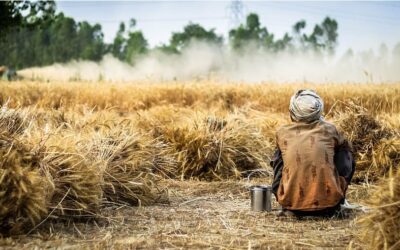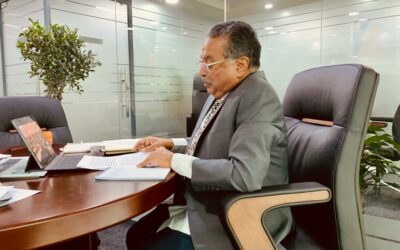Agritech Innovations from India: Relevance in the African context

This photo by Unknown Author is licensed under Creative Commons
“Unless Africa uses modern technologies, our farmers’ output will remain low and we will remain dependent on others to feed us.” – Akinwumi Adesina, 2017 World Food Prize Winner
It is always satisfying to see the innovations that are happening in the agricultural space especially in developing countries like India. Given the fact that both India and several African countries face similar challenges, knowing about these innovations might inspire their transference to other contexts. The theme of the annual Agricultural Fair (called “Krishi Vigyan Mela”) held in New Delhi, India in March 2022 was “Self-sufficient farmers with technological knowledge.” Seeing this, I knew for a fact that there would be several innovations and trends showcased there that would be very relevant to Africa. This was indeed the case.
The innovations showcased there could be segregated into four separate buckets: pre-sowing, crop growth phase, processing and farm management.
In the pre-sowing category, there was a lot of emphasis on soil testing – not through the lengthy process of doing it in the lab but through mobile soil test kits that also have the capacity to recommend fertilizers based on the analysis for a specific crop. This has substantial potential in Africa, where the soils can vary from district to district and camp to camp. These kits can also help in the creation of ultra-customized fertilizers, suited to the crop at hand using some common base elements. These kits are government certified and have been tried and tested to produce valid results. Another interesting technology on display was the low cost, laser guided land levelers. There were many seed multiplication companies that claimed to have developed seeds that improve yield by 30-40% especially in the horticulture space.
In the crop growth category, the major focus was on pest control using organic products or through pest control bugs, avoiding the use of harmful pesticides. One striking contraption was the solar-energy-driven light trap device. It is able to capture large damaging pests attracted by the ultra-violet light it generates, while allowed friendly insects to survive. A single light-trap can be put up for a hectare of crop and can cost as low as $25. Another exciting aspect covered was how to optimize the use of water through the application of hydrogels, hydrophilic polymers with a capacity to hold a large amount of water, near the roots of the crop.
There was also a good deal of focus on processing technologies and processed products. These ranged from flavour-preserving dehydration machines to value-added products developed from millets and mushrooms. The dehydration machine, one of a kind for India, has infra-red (IR) technology that allows for moisture removal at a relatively low temperature (60oC), thereby preserving the smell and flavor of the product (mango, onion, mushrooms, etc.). It is a relatively low-cost product ($4,000 for a 20-tray configuration), which can be used to set up small processing units near the farms in Africa, thereby improving the shelf-life of the produce and the income of the farmers. Another appealing, processed product showcased was stevia in its liquid and powder form. Stevia can be a direct substitute for sugar, is nearly 200 times more potent and is a natural alternative for diabetic people.
However, the best set of innovations on display were in the farm management segment. These included products like biodigesters, solar-powered fences, electricity saver devices and mobile app-based platforms for farm information distribution. Each of these can be direct use-cases in the African context. The biodigester, for example, can use agricultural waste and biomass as input and can generate clean power, while also providing gas as fuel for cooking. The smaller version of this biodigester (1 KW power output) is extremely mobile and can solve the huge problem of pollution caused by the prevalent practice of charcoal and wood burning while also generating electricity to run pumps for accessing underground water. The electricity saver device can also be attached to the pumps, which can save up to 40% electricity. Low-cost solar powered fences can be used to keep out cattle, goats and wild animals from the farm, one of the major reasons cited for low productivity in Africa. Finally, the information distribution platforms can solve the issue of access to experts for various crops, whenever required.
We at EFF look forward to adapting many of these technologies to African contexts and are open to associate with like-minded partners who share this ambition.
Continue Reading
World Environment Day – Revisiting “Only One Earth”
Climate change is real. It affects developing nations disproportionately as compared to developed nations. Developing nations should not wait for help to do good for the environment but work towards ensuring that these challenges are met headlong. They should know that sustainability goals and development is not mutually exclusive.
World Food Crisis – How Africa can be the long-term solution
Africa has abundant resources to be the food factory for the world. This holds true especially for vegetable oil crops such as Sunflower, palm, soybean and rapeseed. Tanzania provides ideal conditions for growing sunflower at scale and supply it’s oil to the major consuming nations such as India.
Earth Day – Rising to the challenge of saving ourselves
We need to find solutions to ensure we can not just stop but reverse climate change. One solution is regenerative agriculture that can not only improve the yields for the farmers, but also reduce their carbon footprint.




0 Comments